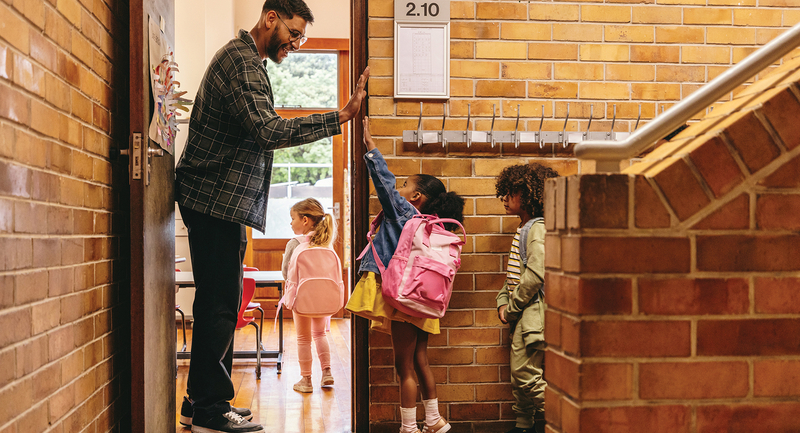- Start with a collaborative school culture. Friend cautioned that if educators begin using inclusive practices without addressing how the grown-ups will work together, they will not succeed—this is the foundation. Collaboration tip: Focus your interactions on information that is observable. Relying on opinions and inferences often leads to miscommunication.
- Create a school belief system of inclusiveness. Many people use the word “inclusion” but don't implement the practices, noted Friend. Inclusion is not just about having special needs students sit in the regular classroom—it's about how they are viewed by their teachers, staff, and peers. Inclusion tip: Use your school's mission statement as one way to communicate strong inclusive values.
- Design multiple service delivery options that provide access to the general curriculum. (For example: consultation, teaming, coteaching, or support from paraprofessionals.) After you have collaboration, after you understand inclusion, then you get to services. The problem in some schools, according to Friend, is that people say, “This year we're doing inclusion,” but nobody's trained, and nobody knows what they're doing or why they're doing it. Too often, educators skip over these basics and jump in with service delivery, she said. Delivery tip: If you use the coteaching model, create a checklist of the ways the special educator and general classroom teacher can convey to students that the relationship is truly collaborative and equal.
- Implement research-based instruction and positive behavior support practices. In the special needs classroom, as in any classroom, it is important for teachers to be highly aware of student learning styles and how to adapt instruction to capitalize on student strengths. Implementation tip: Check out the discussion forums (<LINK URL="http://www.myceconline.org/phpBB2">www.myceconline.org/phpBB2</LINK>) on the Web site for the Council for Exceptional Children. Under the general discussion thread Lesson Swap and Share, you'll find ideas for adapting teaching for special-needs students.
Figure
The Importance of Collaboration
Transcript of Audio Clip
(Click here to hear the audio.)
What I find is, people will say, “Paul's a really good teacher, but he just doesn't like to work with other adults.” By my definition, in the 21st century, you cannot be a good teacher if you don't work well with other adults. That would be like—everybody remember what an IBM Selectric is? Remember IBM Selectric typewriters, those great big, sucker typewriters? It would be like me—I want to be an administrative assistant in a high-tech corporation, and I take my IBM Selectric, and I wobble in to a personnel office, and I say, “Hi. I'm here for a high-paying tech job. I brought my IBM Selectric.” You'd be laughed out of the place, because that's a 1970s skill, and you have to have 21st century skills. In schools, we're willing to let people be 1970s skilled and make excuses for them. And we've got to have everybody be a 21st century teacher.
—Marilyn Friend








